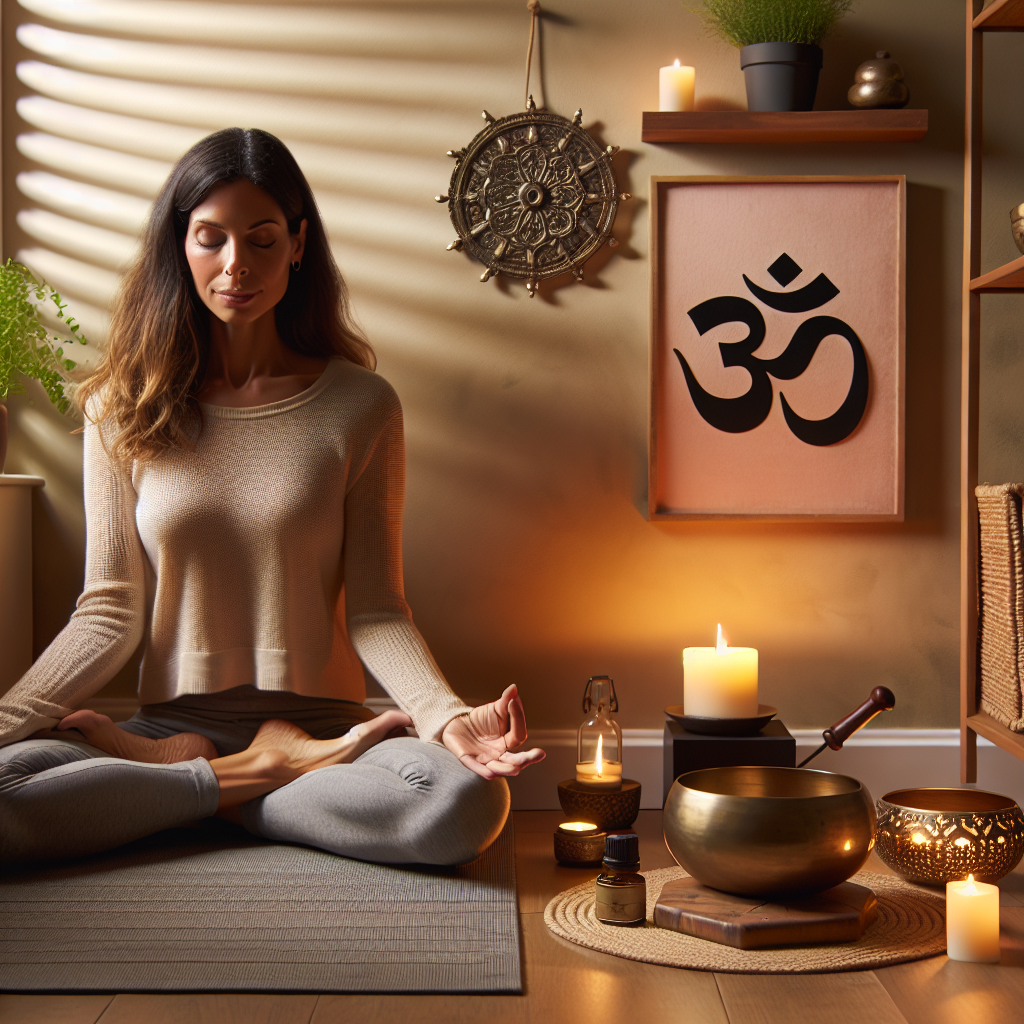
How can i do meditation at home
Introduction to Home Meditation
Meditation has become increasingly popular in our fast-paced world, providing individuals with a tool to find inner peace and mental clarity. Many people are asking themselves, how can I do meditation at home? This article will guide you through the benefits of meditation, the basics of getting started at home, and various techniques you can try.
The Benefits of Meditation
Meditation offers numerous advantages, both for the mind and body. Here are some of the key benefits you can expect:
- Enhanced focus and concentration
- Reduced stress and anxiety
- Improved emotional well-being
- Better sleep quality
- Increased self-awareness
- Promotion of a healthy lifestyle
Understanding the Basics of Meditation
Meditation is the practice of focusing the mind and eliminating distractions to achieve a calm and peaceful state. It can be practiced in various forms, ranging from mindfulness to transcendental meditation. Here’s how you can get started:
Creating a Meditation Space
Having a designated area for meditation can greatly enhance your practice. Here’s how to create the perfect environment:
- Choose a quiet location: Find a space in your home where you can be free from interruptions.
- Make it comfortable: Utilize cushions, yoga mats, or a comfortable chair.
- Incorporate calming elements: Consider using candles, incense, or essential oils to create a tranquil atmosphere.
Setting a Consistent Schedule
Consistency is key when it comes to meditation. Try to meditate at the same time every day, whether in the morning, during lunch, or before bedtime. This routine will help reinforce the habit and make it easier to stick with. Aim for short sessions at first, gradually increasing the duration as you become more comfortable with the practice.
Different Types of Meditation Techniques
There are numerous meditation techniques you can practice at home. Each method can cater to different preferences and goals. Below, we’ll explore some popular techniques.
Mindfulness Meditation
Mindfulness meditation is centered around being present in the moment. Here’s how to practice it:
- Find a quiet spot and sit comfortably.
- Close your eyes and focus on your breath, noticing the sensations of inhaling and exhaling.
- If your mind wanders, gently guide it back to your breath.
Loving-Kindness Meditation
This technique involves generating feelings of compassion and love towards yourself and others. Follow these steps:
- Sit comfortably and close your eyes.
- Breathe deeply and silently repeat phrases like “May I be happy, may I be healthy, may I be safe.”
- Gradually extend these wishes to loved ones, acquaintances, and even those you find challenging.
Guided Meditation
For those new to meditation, guided sessions can be particularly beneficial. These can be found through various apps, websites, or videos. They often provide soothing narratives that lead you through the meditation process.
Transcendental Meditation
This involves silently repeating a specific mantra to settle the mind. While there are trained instructors for this technique, you can also follow these simple steps:
- Choose a mantra that resonates with you.
- Sit comfortably and repeat the mantra quietly to yourself, letting thoughts pass by without judgment.
- Practice for 15-20 minutes twice a day.
Incorporating Meditation into Your Daily Routine
Now that you’ve learned about the different meditation techniques and their benefits, the next step is integrating meditation into your daily life. Here are some tips to help you stay committed:
Start Small
If you’re a beginner, it's wise to start with just a few minutes each day. Gradually increase the time as you feel more comfortable. Even 5-10 minutes can make a difference.
Use Technology to Your Advantage
Leverage meditation apps and online resources for assistance. Some popular apps include:
- Headspace
- Calm
- Insight Timer
Make it Accessible
Try to meditate in a space that you can access easily, such as your bedroom or living room. This way, it becomes an integral part of your daily life.
Common Challenges and How to Overcome Them
Like any new practice, meditation can come with challenges. Here are some common obstacles you might face and solutions to help you overcome them:
Difficulty in Focusing
It’s common to feel distracted during meditation. When this happens, try the following:
- Gently acknowledge the distraction and refocus on your breath.
- Consider using a guided meditation if you find silent sessions challenging.
Restlessness or Boredom
If you feel restless or bored, try changing your meditation style. Experimenting with different techniques can keep your practice fresh and engaging.
Time Management
Finding time for meditation can be a challenge. To better manage your time:
- Schedule sessions into your calendar just as you would any other appointment.
- Opt for shorter but more frequent meditation sessions.
Resources for Further Learning
As you embark on your meditation journey, consider exploring additional resources to enrich your understanding and practice. Here are some recommendations:
- Books: "The Miracle of Mindfulness" by Thich Nhat Hanh
- Documentaries: "Walk With Me," a film about the life of Thich Nhat Hanh
- Online Courses: Websites like Coursera or Udemy offer meditation courses.
Conclusion
Meditation can be a transformative practice that helps you cultivate inner peace and resilience in today’s chaotic world. By incorporating meditation into your daily routine, you'll benefit from reduced stress and increased mindfulness. Remember, as you explore the various techniques, be patient with yourself and find what works for you. With this guide, you now possess the knowledge to successfully answer the question, how can I do meditation at home? Embrace the journey, and let it lead you to a more centered and fulfilling life.
By Guest, Published on October 5th, 2024